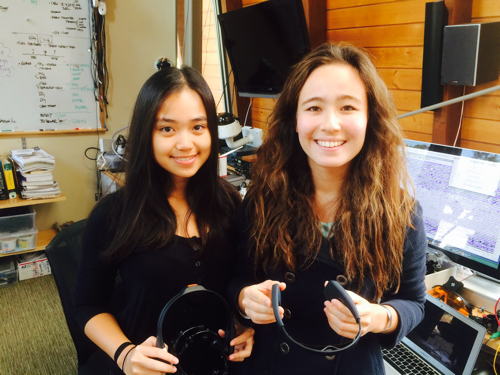
This year several HPA students have been working on brain research using EEG (electroencephalography) method. Wide range of topics is covered by these independent projects, from color and sound perception to learning behaviors and even studying Alzheimer’s disease. We have the opportunity to work with innovative equipments in brain research field such as the MUSE, a brain-sensing headband and Emotiv EPOC+, a scientific contextual EEG etc. Such advanced technology allows the students to explore this new subject of neuroscience combined with psychology beyond regular classroom environment.
Alina Sabyr, class of 2015, works on “The Color Project.” Alina became first involved in brain research her junior year. She started off by studying factors that affect test-taking performance. However, as she realized that subject of learning is a very broad topic, she in collaboration with Jessica Chow, class of 2014, decided to switch to concentrate on colors. The purpose of her project is to identify brain patterns associated with primary colors of light (blue, green and red). She uses frequency graphs from EmotivLifeSciences application and information collected by the MUSE Calm app to analyze brain activity stimulated by these three colors. This project is a stepping-stone to understanding how color can be used to improve people’s daily lives.
Kieu-Giang Nguyen, class of 2016, investigates on the “Stroop Effect” – a psychological demonstration of interference in the reaction time of a task: when the name of a color is printed in a color not denoted by the name, naming the color of the word takes longer and is more prone to errors than when the color of the ink matches the name of the color. By experimenting on brain activities with the techniques of EEG, she expects to learn more about the characteristics and effects of reacting behaviors on the base of Stroop effect, therefore understanding how each part of the brain functions and learning ability of different groups of people. Kieu-Giang is the founder of this project and she will be leading the EEG team next year. She hopes to inspire other students at HPA to discover this interesting yet challenging world of neuroscience.
Comments